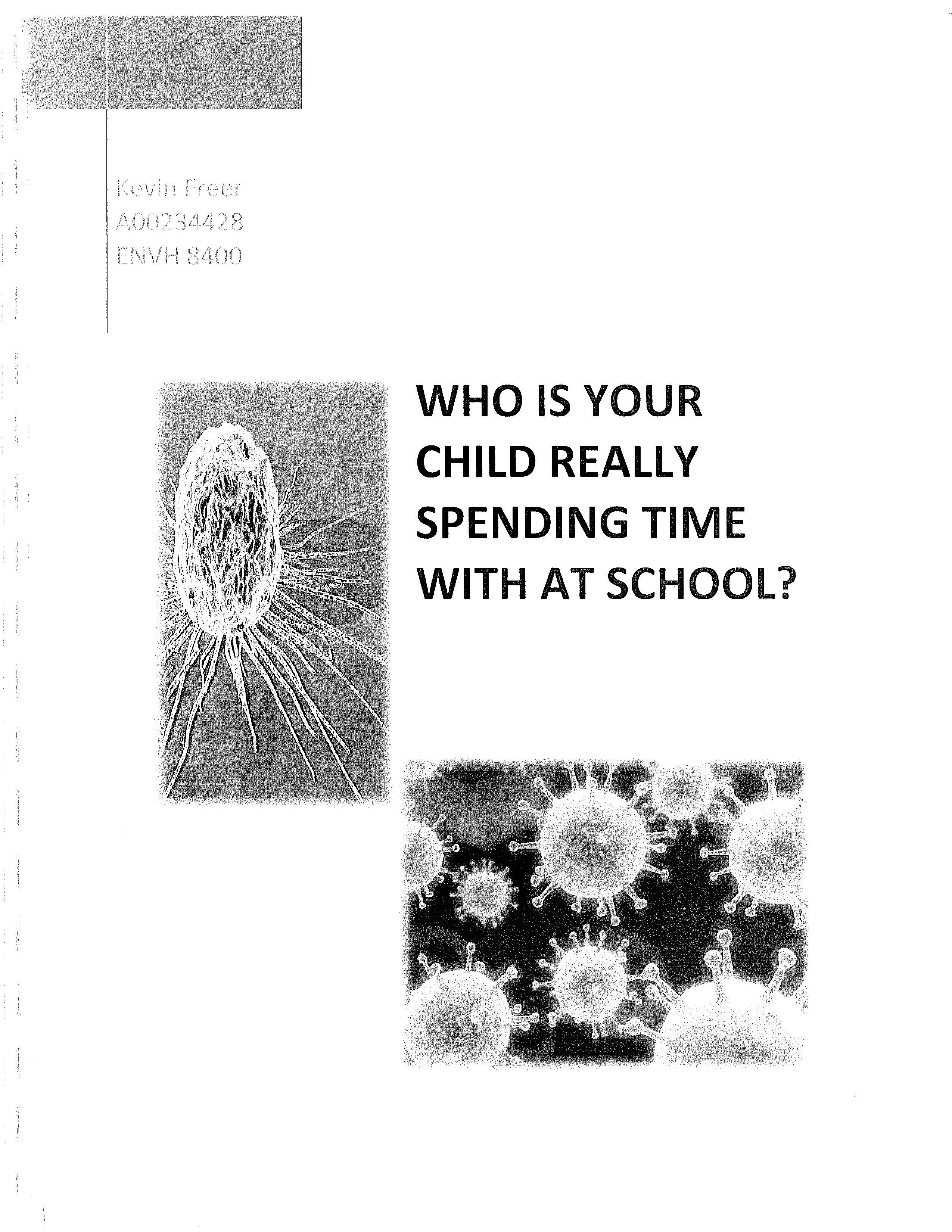Who is Your Child Really Spend Time With at School?
DOI:
https://doi.org/10.47339/ephj.2014.244Keywords:
Sanitation and disinfection, Environmental surfaces, Elementary school children, Microbial countsAbstract
Environmental surfaces, though they may appear clean, can harbour vast quantities of harmful pathogenic microorganisms. Therefore, it is imperative that proper cleaning and sanitation measures are in place to reduce the number of these microorganisms. This becomes even more important when those exposed to these environmental surfaces are a vulnerable group, such as elementary school children. To protect these children, surface sanitizers can be utilized to drastically reduce the amount of microorganisms present. One such sanitizer, SHC 50 General Sodium Hypochlorite Cleaner, was investigated to determine its effectiveness at reducing the microbial count on the desks of a grade on class. Twice a month the janitorial staff uses the sanitizer to clean the grade one desks. Within forty eight hours before and after the desks were cleaned, ten desks were swabbed and plated on 3M Aerobic Count Plate media and the resulting bacterial colonies enumerated. This was repeated for four separate cleaning periods. The final result was that the mean colony count of microbes on the school desks for the 'before' sampling period was 42 cfu/50cm2 , while for the 'after' sampling period it was 18 cfu/50cm2 . A chi squared analysis of the 'before'/'after' mean colony counts was used to evaluate whether the desks tested for before and after samples produced bacterial colony counts exceeding the recommended guidelines of 100cfu/50cm2. Of the eighty samples, only one 'before' cleaning sample exceeded the guidelines. The result was a p value of 0.314267 was obtained, resulting in the null hypothesis not being rejected and implying that there was no association between the mean aerobic plate count before and after sanitation of the desks. A one tailed independent samples t test was also performed, providing a p value of 0.0000 (99.9%). These result showed that there was a statistically significant difference in mean colony counts between the 'before' and 'after' cleaning periods. It could therefore be concluded that the SHC 50 General Sodium Hypochlorite cleaner was effective at statistically reducing the microbial load on the desks.
Downloads

Downloads
Published
How to Cite
Issue
Section
Categories
License
Copyright (c) 2009 Kevin Freer

This work is licensed under a Creative Commons Attribution-NonCommercial-NoDerivatives 4.0 International License.
Content on this site is licensed under a Creative Commons Attribution-NonCommercial-NoDerivatives 4.0 (CC BY-NC-ND 4.0) license.
